How building an igloo in northern Labrador is changing with the weather
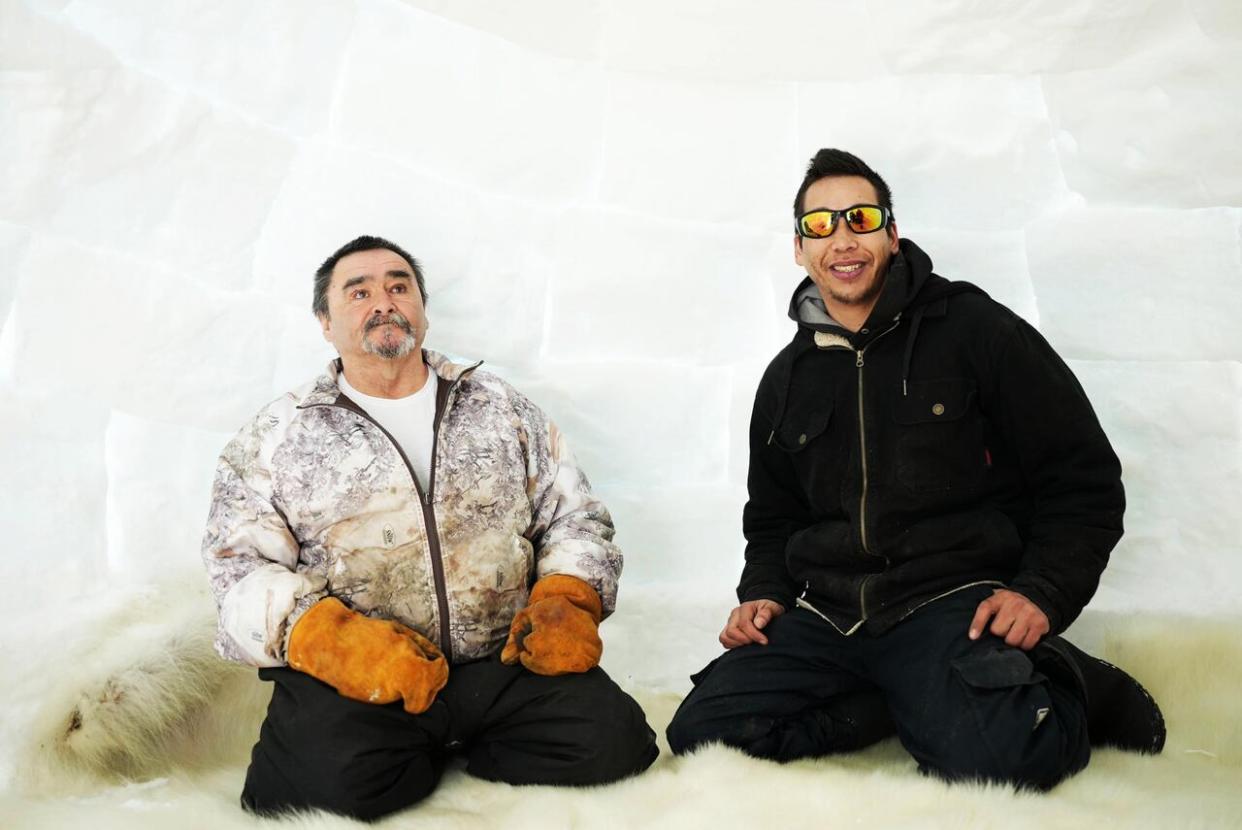
Overlooking Hopedale harbour, Ross Flowers has built his home — as well as the traditional Inuit home: an igloo that's three metres wide, built from snow.
Flowers builds the circular structure almost every year, teaching young men how to find the right snow, cut blocks and build the shape. At the end, Flowers lays down a polar bear hide as a base for himself and others to relax on.
In March, the group cut 100 snow blocks, but an unexpected rainstorm made more than half unusable. The men went back out to new locations, but the snow composition this winter complicated the work.
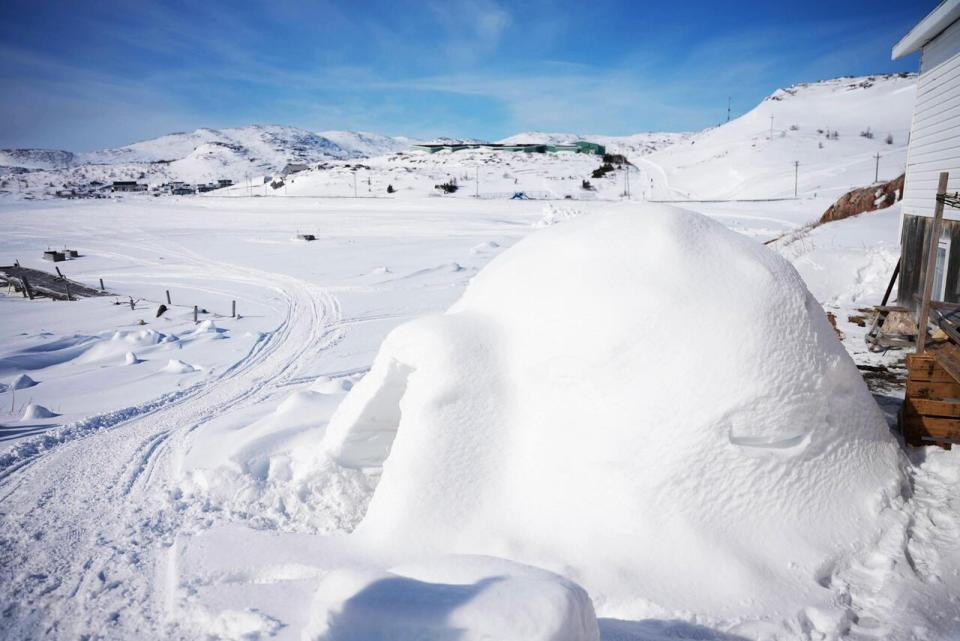
The igloo, on the shores of Hopedale harbour, will last until the warm temperatures melt the snow that holds it together. (Heidi Atter/CBC)
"This year, the snow is different. It's like sugary, and layers of ice and, like, sugary snow in between. Harder to get the blocks out, a lot of the blocks would break," Flowers said.
Five or six years ago, the snow would be hard and compact without ice layers, he said. In the end, the men built a three-metre igloo — it would normally be more than three and a half metres wide — with smaller blocks.
Environment and Climate Change Canada previously said this winter was on average five degrees warmer in Labrador.
Even with the smaller size, people of all ages stop by to see the inside. The kids have a number of questions about long ago and history, Flowers said.
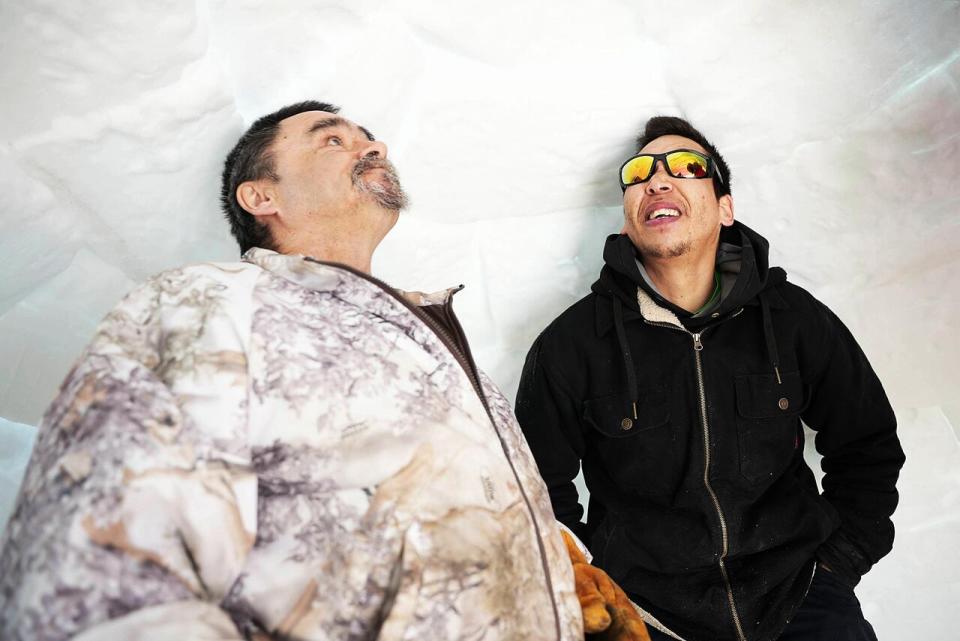
Flowers and Nochasak say the snow made it more challenging than before to build an igloo. (Heidi Atter/CBC)
"When we make the igloo, they loves it, they all come around," said Mark Nochasak. "They just light right up. Big smiles, laughs."
This year was the third time Nochasak helped Flowers build an igloo. He said it's a tradition, but also an important skill while travelling out on the land.
"It's always a good experience," Nochasak said. "Because like if you ever get stuck out outside and in a snowstorm or something, you could learn something like this and it could help save you."
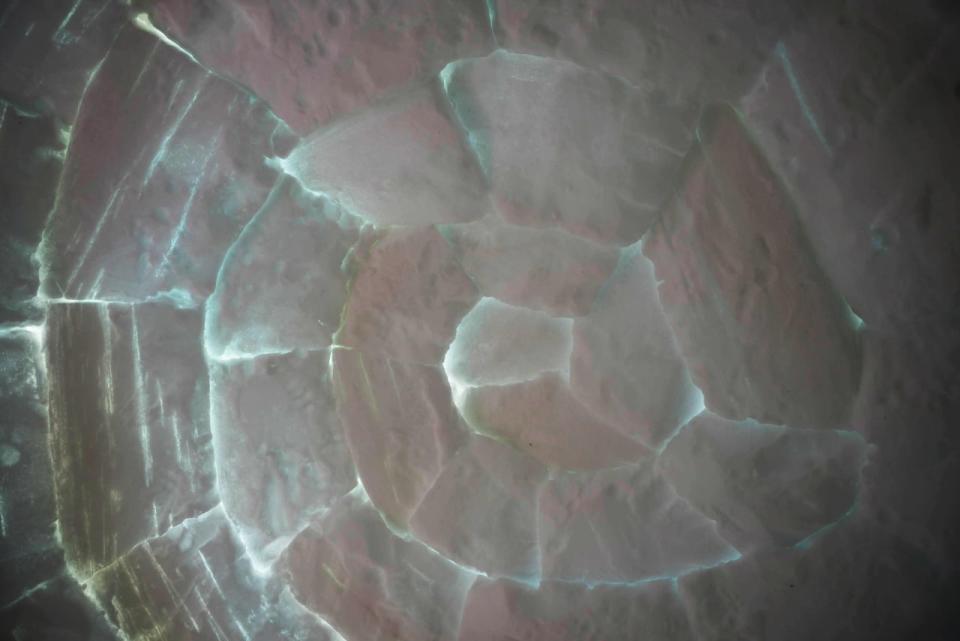
The sunlight highlights the ice crystals inside the snow. Flowers says this is the first year he struggled to find compact snow and the snow had ice crystals inside. (Heidi Atter/CBC)
Flowers said he believes the Inuit used to help each other building their igloos in the past, similar to how they worked together to build the one in Hopedale this year.
Building igloos in memory of great-grandmother
Flowers builds the igloo — called illuvigak in Inuttitut — to pass on the tradition in memory of his great-grandmother.
When Flowers' mother Nancy was a child, she would visit her grandmother in her own igloo. The igloo was large, her grandmother living in it comfortably all winter north of Hopedale, Flowers said.
"Her grandmother was old, mother was only a small little girl," he said. "If she didn't tell them stories, I wouldn't make one, or I wouldn't have started making them. It's all in memory of them."
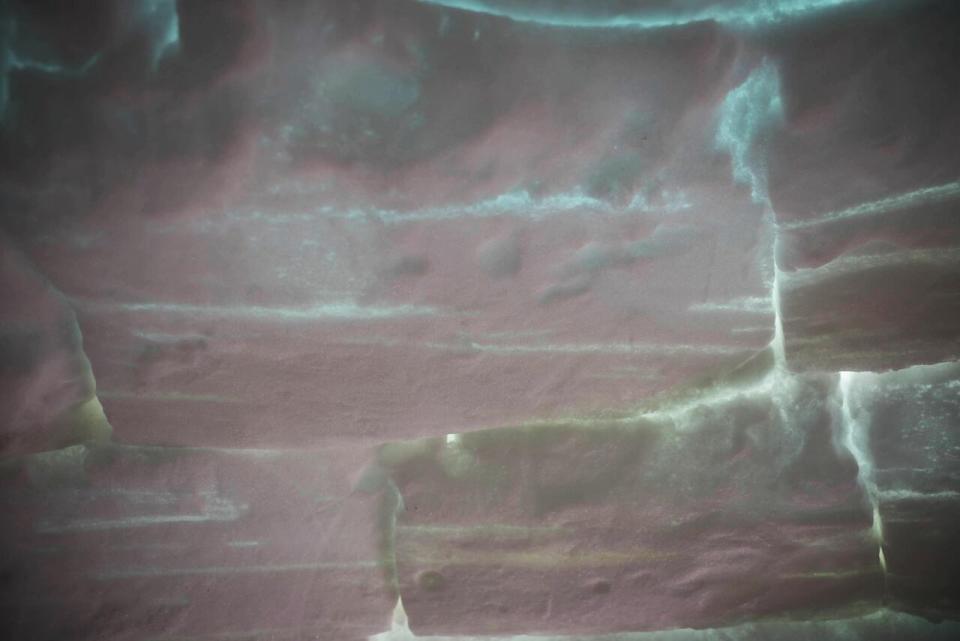
Flowers had to use smaller snow blocks than usual this winter because the snow fell apart. This year, he says, the ice crystals can be seen with colourful ribbons in the snow. (Heidi Atter/CBC)
Flowers' parents were deeply connected to their culture and traditions. They passed down stories and knowledge to Flowers and his family that he continues to pass along today.
He said he hopes to keep building the igloos each year, as long as the snow holds.
Download our free CBC News app to sign up for push alerts for CBC Newfoundland and Labrador. Click here to visit our landing page.


